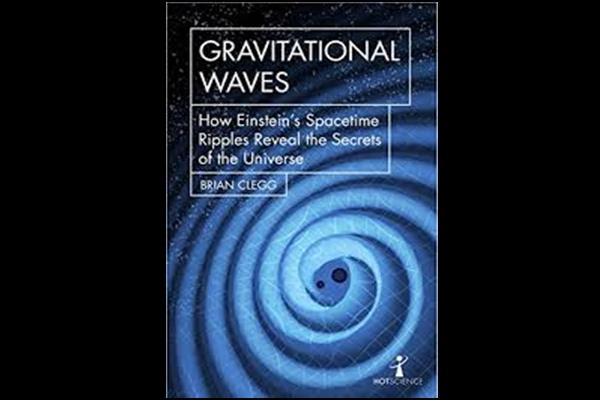Article /
Books /
Review
Hearing the 'music' from across universe - and the implications (Book Review) |
Title: Gravitational Waves; Author:
Brian Clegg; Publisher: Icon Hot Science; Pages: 176; Price: Rs 399
Recording the occurrence of a celestial event, far away across deep space and
eons after it happened, may not seem a pathbreaking scientific achievement, even
if happened almost a century after a great scientist had set out its
possibility. But the 'observation' of gravitational waves as a faint, brief
sound is important, even if it doesn't affect us directly.
Hailed as the scientific breakthrough of the century, LIGO's (the Laser
Interferometer Gravitational-Wave Observatory) validation of existence of
gravitational waves, predicted by Albert Einstein in 1916 as an outcome of his
general theory of relativity, was said to eclipse the successful search for the
elusive Higgs boson (the "god particle").
But headlines apart - and wrong ones at that as well as other wrong perceptions
about LIGO's achievement, as this book shows, the discovery was a paradigm shift
in both scientific knowledge and scientific method, contends author and science
populariser Brian Clegg.
However before we come to these, he says we need to do some basic groundwork to
understand the discovery, from how Einstein "predicted the existence of
gravitational waves almost exactly a century before the discovery (a coincidence
that would itself make some wonder if the whole thing was a hoax)".
Then, there is the "controversy surrounding early attempts to detect
gravitational waves using massive metal bars", the "brave step into the dark
that led to LIGO despite, rather than thanks to its management", and a look into
"remarkable cosmological events involving black holes and neutron stars" that
made these waves' detection possible.
But, first of all, says Clegg, for all those who had a poor relation/ or have
fallen out of touch with physics, we need to understand what a wave is. And it's
not just the ripples on water when a stone is dropped into it or the foamy water
crashing on beaches, but what happens "under" the phenomenon.
From this, we come to the debates and experiments on the nature of light, and
from that to another fundamental force of nature - gravity, via Galileo and
Newton, and its effect on "spacetime" but more specifically to Einstein's
general theory of relativity. And it was from this "brilliant mathematical model
of the phenomenon", gravitational waves were predicted.
We also learn what gravitational waves actually are - as far as their
manifestation is concerned, given that some descriptions in mass media are
misleading.
Clegg, who actually begins with a terse account of LIGO finally recording the
proof, returns to the theme from the third chapter, where he brings out the
challenge of detecting them experimentally .This is vividly brought out by a
scale table proposed by Caltech physicist Kip Thorne.
Take the familiar centimetre, says Thorne, a long-time researcher on
gravitational waves and one of the LIGO founders, and then keep dividing by
powers of 10 multiple times till you get to 10 to the power of minus 17, which
is "the magnitude of the largest motion we may expect to see in the separation
between the mirrors of a gravitational wave detector with arms a few km long".
This sets the stage for recounting all the difficulties in the equipment needed
to detect gravitational waves since the effort began in the 1960s, the several
false starts, the advances in astronomical sciences that helped, the genesis of
LIGO, its teething problems - internal and external, till that evening in
September 2015, where its purpose was vindicated. But as we see, the story
doesn't end there.
While all this can also be found in Janna Levin's "Black Hole Blues and Other
Songs from Outer Space", where Clegg scores, apart from a detailed look at the
scientific rigour LIGO followed, is chronicling the shift in scientific method
the search for gravitational waves represented, right from its early days.
This was in moving the observation from something that actually happened to "a
statistical observation, something that had good probability of not being a
random occurrence but couldn't be definitively said to have happened" (also
followed in the case of Higgs boson, says Clegg.
And while proving the "dance" of neutrino stars, and the existence of black
holes, it is this new technique that physics provides astronomy which might help
us find the definitive origin of our universe - and its future.
TAGS:
Gravitational Waves,
Gravitational Waves book review,
Laser Interferometer Gravitational-Wave Observatory,
Higgs boson,
god particle,


